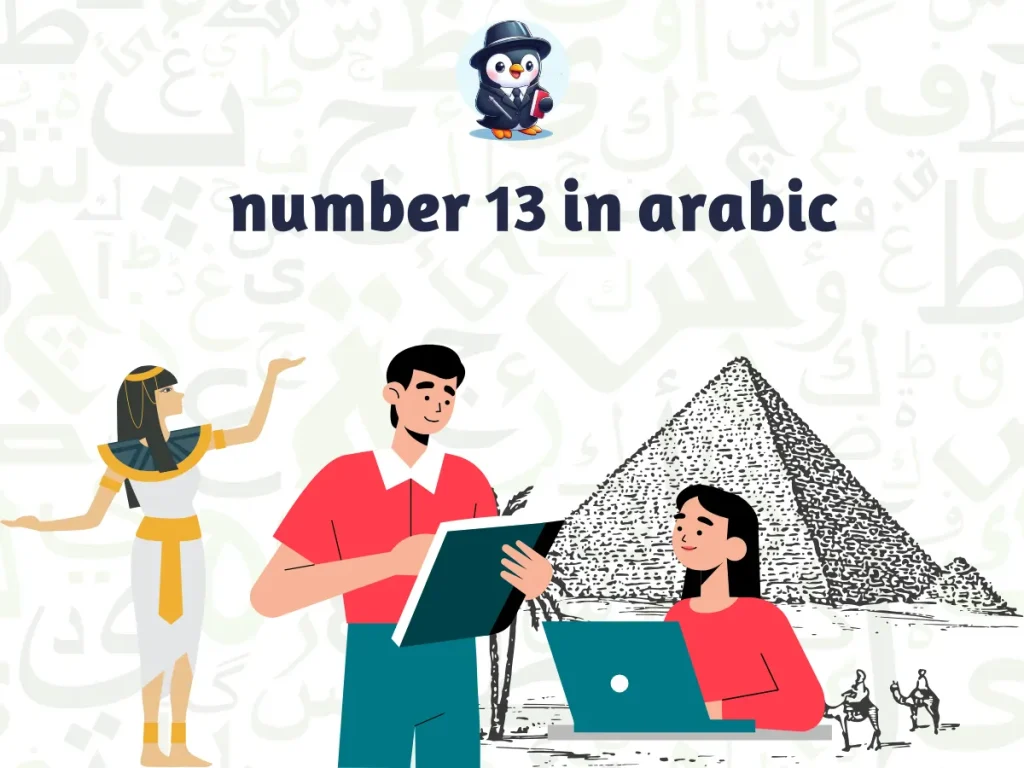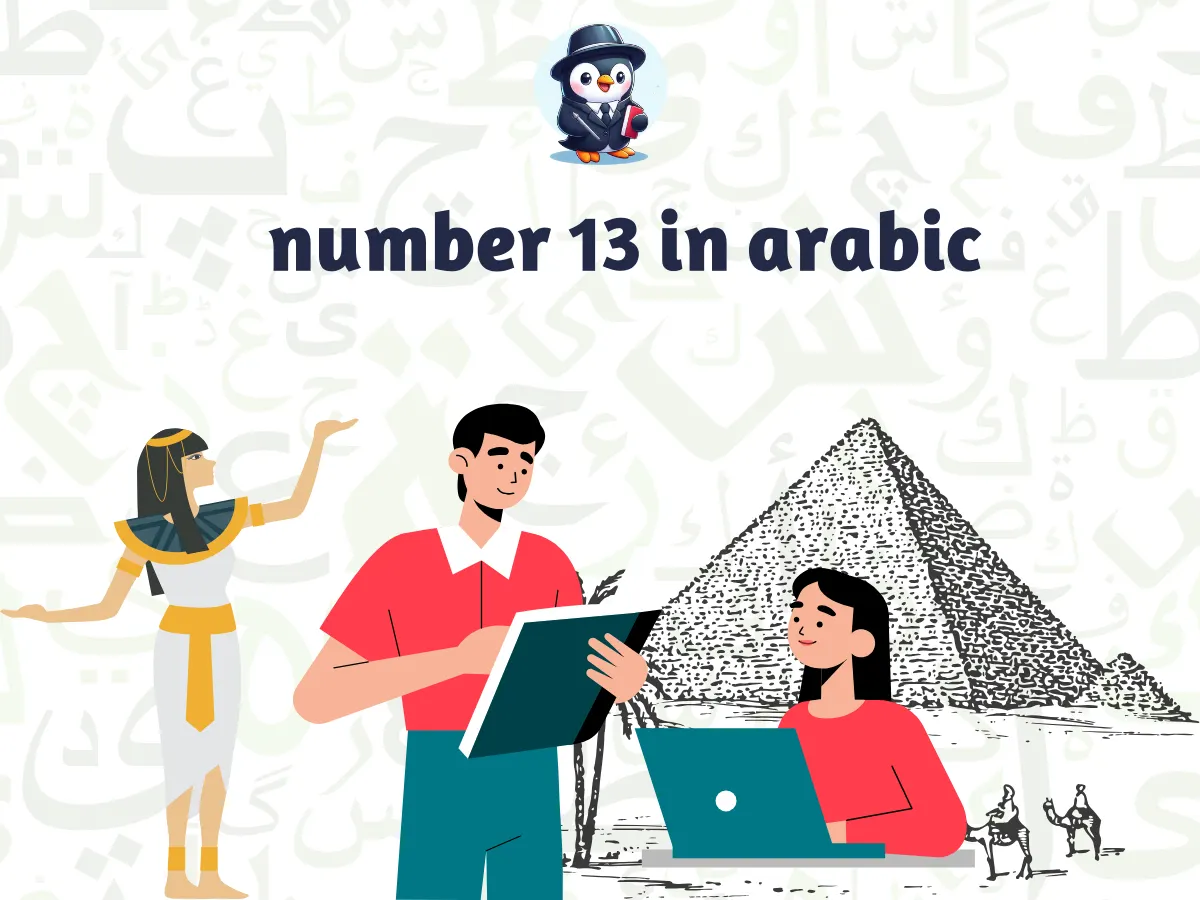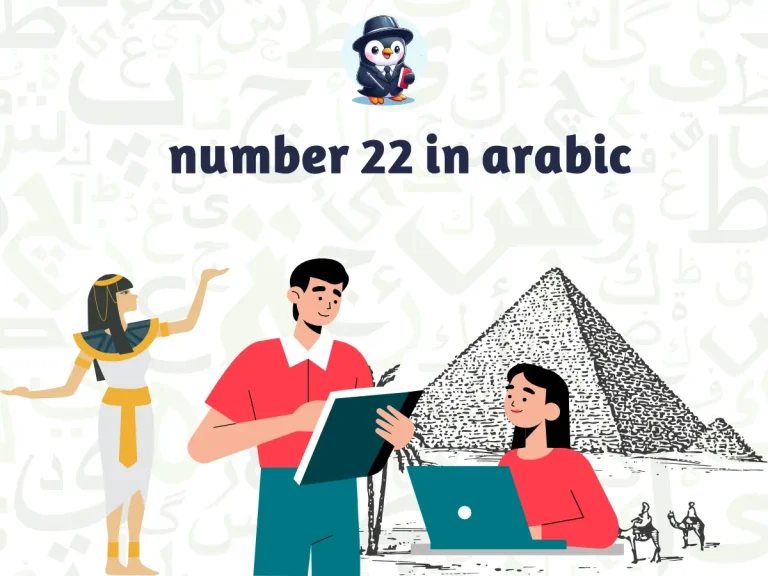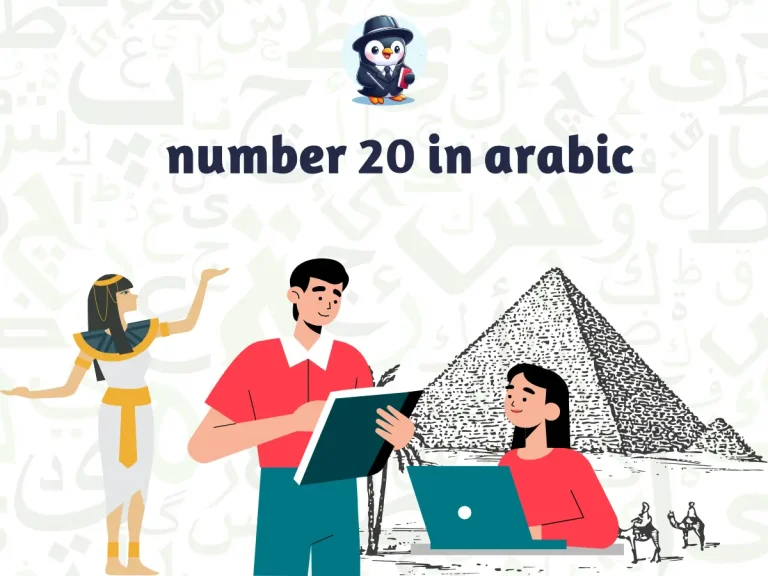number 13 in arabic pronunciation & writing
The number 13 in arabic, “Thalatha ‘Ashar” (ثلاثة عشر) , holds a surprising significance that goes beyond its numerical value.
Unlike some cultures where thirteen is associated with bad luck, the Arabic world often views it with neutrality.
To learn more about the rest of the numbers from 1 to 100, you can visit this link: Arabic numbers 1 to 100
Here’s a deeper look at the importance and use of thirteen in the Arabic language:
number 13 in arabic: Breaking Stereotypes
While Western cultures might associate thirteen with misfortune, there’s no such widespread belief in the Arabic world.
This distinction highlights the importance of understanding cultural nuances when interpreting numbers.
number 13 in arabic: Everyday Applications
Thirteen finds its place in everyday communication, from room numbers in hotels
(“ḥajazt ghurfah fi al-fundiq li-thalatha ‘ashara yawman” (حجزت غرفة في الفندق لثلاثة عشر يوما) – I booked a room at the hotel for thirteen days)
to bus schedules (“al-autobus yaʾati baʿd thalatha ‘ashara daqiqah” (الأوتوبيس يأتي بعد ثلاثة عشر دقيقة) – The bus comes in thirteen minutes).
number 13 in arabic: Historical and Cultural References
Dates on historical buildings and documents are often written in numerals. Knowing “Thalatha ‘Ashar” allows you to decipher these inscriptions.
Additionally, some folktales or proverbs might involve the number thirteen, revealing cultural insights.
number 13 in arabic: A Bridge to Mathematical Concepts
Understanding how thirteen is formed (“three and ten” – ثلاثة وعشرة (thalāthah wa-ʿashara)) reinforces the pattern used for numbers eleven to nineteen.
This pattern is crucial for grasping the Arabic numbering system.
By appreciating the various uses of “Thalatha ‘Ashar,” you gain a deeper understanding of Arabic communication and cultural perspectives.
Thirteen serves as a reminder that numbers can hold more meaning than their numerical value, reflecting cultural beliefs and enriching our understanding of the world around us.
Unveiling the Arabic World: Why Numbers Matter, and Why Thirteen Stands Out
Learning numbers in Arabic unlocks a gateway to rich communication and cultural understanding.
Here’s why mastering numbers, particularly the unique case of thirteen, is crucial for navigating the Arabic world:
The Power of Numbers in Communication
Essential for Everyday Interactions From shopping in a market (“urid thalatha ‘ashara kiloghrāman min al-tuffaḥ” – I want thirteen kilograms of apples)
to discussing bus schedules (“al-autobus yaʾati baʿd arbaʿata ‘ashara daqiqah” (الأوتوبيس يأتي بعد أربعة عشر دقيقة) – The bus comes in fourteen minutes), numbers are the building blocks of daily communication.
Unlocking Historical Texts
Dates on historical buildings and documents are often written in numerals. Knowing Arabic numbers allows you to decipher these inscriptions,offering a window into the past.
An inscription mentioning “sanat thalāthīn wa ithnayn” (سنة ثلاثين واثنتين) refers to the year 32 in the Hijri calendar.
Understanding the System Arabic employs a distinct system for numbers eleven to nineteen.
Mastering these numbers, like “Thalatha ‘Ashar” (ثلاثة عشر) for thirteen, is essential for comprehending the logic and structure of the Arabic numbering system.
Thirteen: A Cultural Distinction
While Western cultures often associate thirteen with bad luck, the Arabic world holds a refreshingly neutral view.
Learning this distinction highlights the importance of cultural sensitivity. Here’s why thirteen stands out:
- Breaking Stereotypes: Understanding “Thalatha ‘Ashar” allows you to navigate situations where the number thirteen appears without any negative connotations. This is a valuable lesson in appreciating cultural perspectives on seemingly ordinary numbers.
- A Bridge to Mathematical Concepts: The way thirteen is formed (“three and ten” – ثلاثة وعشرة (thalāthah wa-ʿashara)) reinforces the pattern used for numbers eleven to nineteen. Understanding this pattern is crucial for grasping the Arabic numbering system as a whole.
Learning Arabic numbers empowers you to not only communicate effectively but also appreciate the cultural nuances embedded within them.
Thirteen serves as a reminder that numbers can hold more meaning than their numerical value, offering a window into the rich tapestry of the Arabic world.
Demystifying Thirteen: Writing, Pronouncing, and Dialectal Variations in Arabic
The number 13 in arabic, “Thalatha ‘Ashar” (ثلاثة عشر) in Arabic, plays a vital role in communication.
Here’s a guide on writing, pronouncing, and understanding how it might differ across Arabic dialects:

Writing: 13 in arabic
- ثلاثة (Thalatha): Written with the letters tha (ث), lam (ل), alif (ا), tha (ث), and hah (ه).
- عشر (‘Ashar): This part uses the letters
ayn(ع), shiin (ش), and ra (ر).
Pronunciation 13 in arabic
- Thalatha: Sounds like “tha” (voiceless dental fricative, similar to “th” in “think”) followed by “la” (like “lah”).
- ‘Ashar: Refer to explanations for numbers eleven through nineteen. There’s a guttural sound for the
ayn(ع).
Meaning: Literally translates to “three and ten” (ثلاثة وعشرة (thalāthah wa-ʿashara)).
| Pronunciation | Arabic | English |
|---|---|---|
| thalatha ‘ashara | ثلاثة عشر | thirteen |
| sa-asol ila al-matar baʿd thalatha ‘ashara saaʿah | سأصل إلى المطار بعد ثلاثة عشر ساعة | I will arrive at the airport after thirteen hours. |
Dialectal Variations
While the core meaning remains “thirteen,” pronunciation might differ slightly depending on the region:
- Standard Arabic (MSA): The most widely taught and understood form. Pronunciation follows classical rules with a clear distinction between the “th” sound in “Thalatha” and the guttural “ʿayn” sound in “‘Ashar.”
- Egyptian Arabic: The “th” sound in “Thalatha” might be softened, and the “ʿayn” sound in “‘Ashar” might be slightly less prominent.
- Levantine Arabic: Similar to Egyptian Arabic, with a possible softening of the “th” sound and a less emphasized “ʿayn” sound.
- Gulf Arabic: The “ʿayn” sound in “‘Ashar” might be the most noticeable difference, pronounced with a lighter emphasis compared to Standard Arabic.
- Magrebi Arabic: The pronunciation of both “Thalatha” and “‘Ashar” can vary depending on the specific sub-dialect. The “th” sound in “Thalatha” might be closer to a “t” sound.
Remember: These are general examples, and specific variations depend on the individual dialect and speaker.
Understanding these dialectal variations demonstrates cultural sensitivity and enhances your comprehension of spoken Arabic.
By learning to write and pronounce “Thalatha ‘Ashar” and appreciating its variations across dialects, you’ll be well on your way to navigating the diverse world of Arabic communication.







